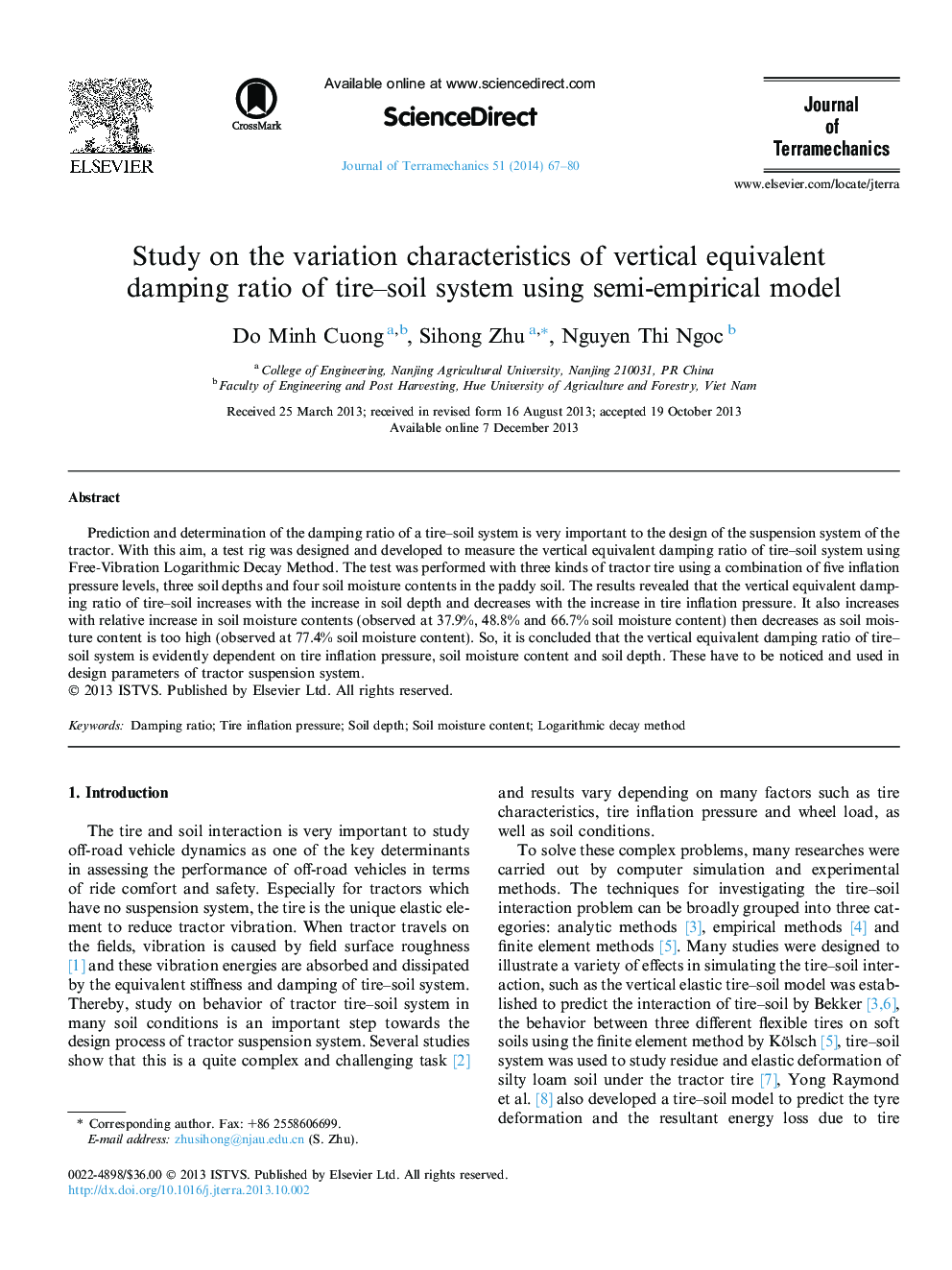| کد مقاله | کد نشریه | سال انتشار | مقاله انگلیسی | نسخه تمام متن |
|---|---|---|---|---|
| 796662 | 1467299 | 2014 | 14 صفحه PDF | دانلود رایگان |
• The damping ratio of tire–soil system increases as soil depth increases.
• The damping ratio of tire–soil system decreases as tire pressure increases.
• The damping ratio of tire–soil system increases as soil moisture content increases.
• The damping ratio of tire–soil system will be decreased as soil MC is too high.
Prediction and determination of the damping ratio of a tire–soil system is very important to the design of the suspension system of the tractor. With this aim, a test rig was designed and developed to measure the vertical equivalent damping ratio of tire–soil system using Free-Vibration Logarithmic Decay Method. The test was performed with three kinds of tractor tire using a combination of five inflation pressure levels, three soil depths and four soil moisture contents in the paddy soil. The results revealed that the vertical equivalent damping ratio of tire–soil increases with the increase in soil depth and decreases with the increase in tire inflation pressure. It also increases with relative increase in soil moisture contents (observed at 37.9%, 48.8% and 66.7% soil moisture content) then decreases as soil moisture content is too high (observed at 77.4% soil moisture content). So, it is concluded that the vertical equivalent damping ratio of tire–soil system is evidently dependent on tire inflation pressure, soil moisture content and soil depth. These have to be noticed and used in design parameters of tractor suspension system.
Journal: Journal of Terramechanics - Volume 51, February 2014, Pages 67–80
